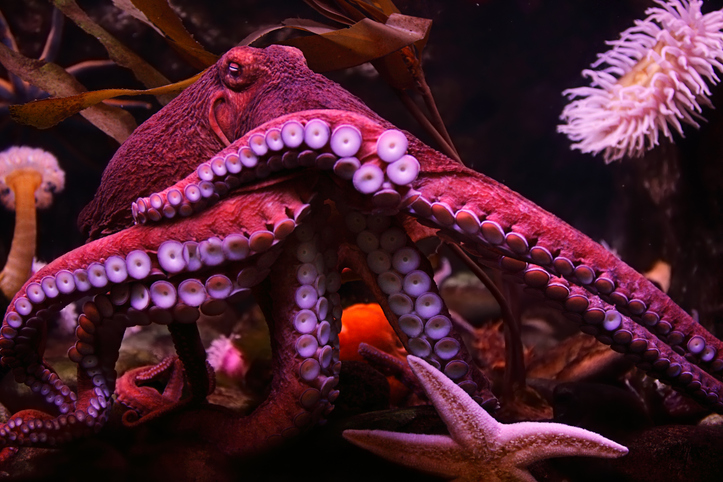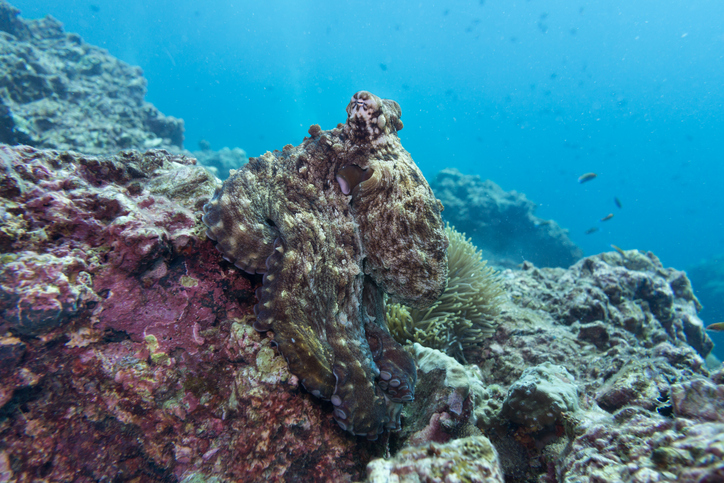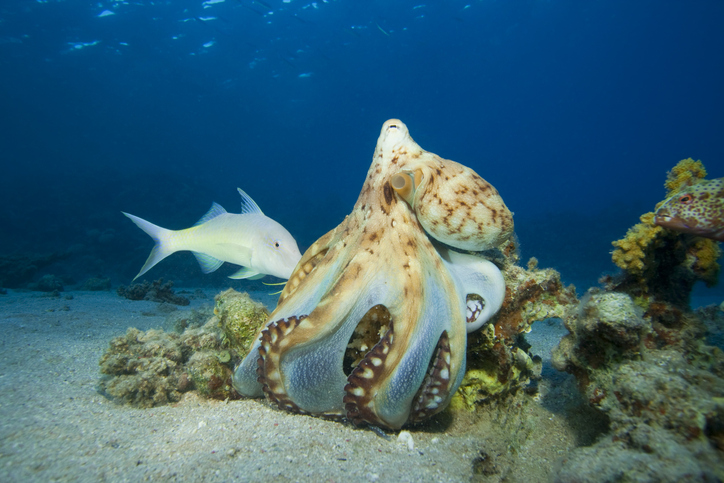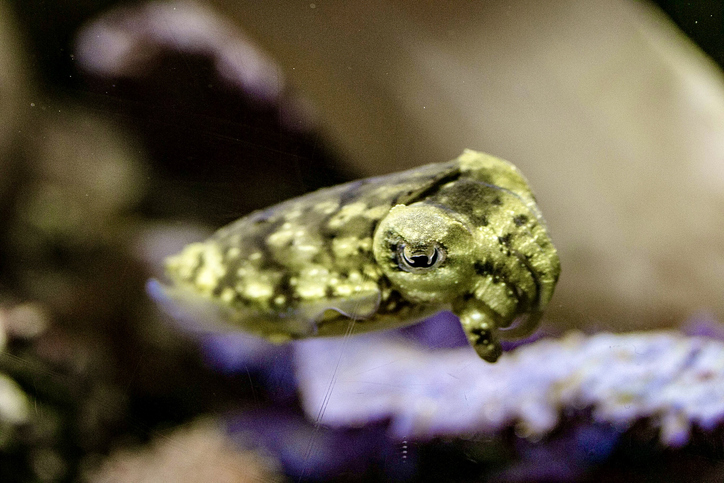
Octopuses and squids are basically the same, right? Not quite!
Although they’re both cephalopods and share similar visual characteristics, the squid and the octopus are actually very different animals. Habitat, behaviour, lifespan and defence mechanisms; there’s much that sets them apart – including some cool traits that make these tentacled critters some of the most unique species in our seas and oceans.
In this guide, we’re showcasing all the differences between a squid and an octopus, so you can quickly identify which is which.
Habitat

While squids and octopuses both live in saltwater and are found in all of the world’s oceans, where they choose to live in our seas is what sets them apart.
Squids live in the open ocean, often alone but at times in large pods or schools. They use a combination of fins and “jet propulsion” to move around, with the ability to move forward, backwards and side to side in any direction they choose.
Although octopuses share a similar method of travel, propelling themselves forward with jets of water, they don’t have the same fins as the squid. They also prefer living on the seabed as opposed to travelling through open water, and spend much of their lives in dens consisting of small caves, crevices and cracks.
Unlike squid, octopuses almost always live alone. They’re solitary, territorial animals, only coming together to mate during the breeding season.
Visual appearance

Sure, squids and octopuses look kind of similar, but placed side by side and some obvious differences quickly come to light.
For starters, the octopus has a much more rounded head, which is known as the mantle. By comparison, the mantle of a squid is elongated and almost triangular in shape, with two fins on either side often referred to as “wings”.
Elsewhere, squids appear much more rigid than octopuses, and that’s all thanks to a stiff backbone known as a “pen”. Octopuses lack this appendage, making it much easier for them to fit inside remarkably small spaces.
As for tentacles, octopuses famously have eight of these sucker-laden legs, which they can use to hold objects, walk, and interact with items in their environment. While squids also have tentacles, they don’t use them in quite the same way as octopuses, and theirs feature a combination of suckers and hooks for trapping their prey.
Defence mechanisms

This is where the weird and wonderful world of cephalopods really comes into its own.
As most people know, squids release a jet of black ink when they feel threatened, which is designed to disorientate would-be predators and allow the squid to make a hasty getaway. All species of squids are capable of this behaviour and carry a special gland called an ink sac which stores the liquid, ready to spray out when they feel in danger.
Octopuses, meanwhile, have no such ability, although their defence mechanism is arguably way cooler.
Rather than disorientating predators, octopuses use their remarkable colour-changing skin as camouflage, blending seamlessly into rocks, reefs and other objects found on the ocean floor. This concealment technique happens almost instantaneously thanks to chromatophores on the octopus’s skin – small pigment sacs that react to electrical currents within the animal’s nervous system.
If you’ve never seen an octopus displaying its camouflaging abilities, we’d urge you to search for it on YouTube – it’s otherworldly stuff!
Predation and diet

Since octopuses spend most of their lives on the ocean floor, they typically feed on other bottom-dwellers, including crustaceans like lobsters, crabs, clams and shrimps. These are opportunistic hunters that use their ingenious camouflage to ambush prey, before grabbing hold with their suckers and injecting their meal with a powerful toxin. This paralyses the animal, allowing the octopus to eat lunch at their leisure.
Squids, meanwhile, feed on small fish and crustaceans in the water column, using their long tentacles and powerful jet propulsion system to quickly overcome their prey. No toxins are needed for squid to feed, with the animal’s sharp beak making short work of even the toughest prey. Trust us – you wouldn’t want to be on the receiving end of a bite from a squid!
Size

With hundreds of species of squids and octopuses found in our oceans, there is a huge disparity in size between the different animals. So, what’s the largest type of squid and octopus found in our oceans? What’s the smallest? And how do they compare?
Let’s start with a real monster of the depths: the colossal squid. With unconfirmed reports of animals measuring up to 20 metres in length, this is easily the biggest known cephalopod on Earth and one that lives exclusively in the Southern Ocean.
As for the largest species of octopus, that accolade goes to the giant Pacific octopus. Growing an average of 5 metres in overall length, these three-hearted creatures are known for their supreme intelligence. The largest ever recorded came in at close to 10 metres, weighing over 270kg.
Fancy getting up close to one of these beautiful animals yourself? You’ll find a giant Pacific octopus right here at Hastings Aquarium!
At the smaller end of the scale, the star-sucker pygmy is the smallest known species of octopus, measuring just 1.5 centimetres in overall length. Meanwhile, the southern pygmy is the smallest squid, also coming in under 2 centimetres.
So, there you have it, a side-by-side comparison of squids and octopuses, showcasing all the characteristics that make these amazing animals truly unique. To see a giant Pacific octopus and other incredible creatures of the deep, book your tickets to Hastings Aquarium today.
